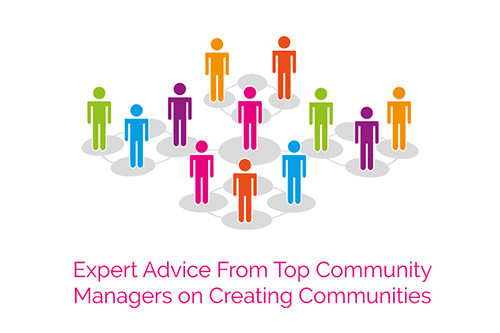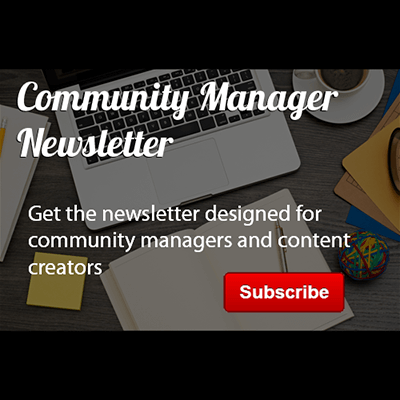
Community Managers are often tasked with the impossibility of creating community out of thin air, with no budget, little internal commitment, no time and no experience. These initiatives are typically handed down from upper management with little direction, just ‘Go accomplish the impossible in 90 days’…
Building a community isn’t rocket science, it’s more like shoveling coal – neverending hard work for little immediate reward. It takes either a major budget and hard work, or a long time and hard work to build a strong community. Since my early days managing message boards and chat rooms with AOL (1996), I’ve seen hundreds of communities start and fail. Each time, it’s usually due to one of the reasons below.
HERE’S WHY YOUR COMMUNITY FAILED:
I’ve tapped some of the smartest folks in community management to give me their advice on creating community. Using sources like the e-Mint Community Manager’s Yahoo Group and The Community Manager, Advocate, and Evangelist group on Facebook, we’ve come up with some strong ways to kill a community.
1. Using an Untrained Community Manager
Your Community Manager is the lead on the project and she’s never managed a community before… You are setting your community and your CM up for failure. There are many reasons this is a terrible idea, among them being abuse management, legal issues, efficiency and the potential for embarrassing mistakes (that never go away), but the most significant is that an unseasonsed community manager is not going to understand how to build the community, how to know when a particular strategy is working, when to change direction and just how much work goes into building a community:
Building an online community is not an event which takes place during a given week or month. It is not a project which is developed and handed in; it is an on-going process. -Sharon Lina Pearce
TIP: Look for a community manager who has managed communities for at least 2-3 years. A social media manager is not necessarily a community manager, so don’t count that experience 1:1 unless there is proof of community (following a brand’s updates is not akin to community engagement).
2. No Real Internal Support
Nothing kills a community faster than a lack of support internally. A community may actually be thriving, but if the initiative loses budget internally, or a key leader who loved that community leaves his/her position, the community may be killed or headcount for the community support org may be cut.
Not being resourced properly, in particular spending too much on technology and not enough on people. See David Armano’s “People, Process, Platforms” article: Technology Will Only Solve 1/3 of Your Social Business Problem (from Alison’s rich Quora answer on the topic) -Alison Michalk
TIP: Make sure that more than one VP is committed to your community’s life. Keep C level colleagues in the loop as to the community’s success. Send regular analytics reports to them, including KPIs pointing to revenue generation, as that’s what really matters to your bosses (and rightly so).
3. Unrealistic Expectations
One of my favorite bits of advice came from looong-time community manager (and teacher/author), Patrick O’Keefe.
For a lot of people, depending on who they report to, there is this pressure for quick success. But community is a long game. If you aren’t willing to commit 6, 9, 12 months to get some traction, you probably shouldn’t even bother. Notice I said “some traction.” I didn’t say “greatest community ever.” Community takes time. If there is an online community you admire, odds are they have been working for years. If you think there is a reasonable chance you might abandon your efforts in less than 6 months, you should probably just do something else. You, or your organization, aren’t ready for community. -Patrick O’Keefe
TIP: Insist on a detailed project outline (including SMART goals). Note timelines and expectations, as well as the purpose of the community. Tie your KPIs to the purpose of the initiative. With each analytics report, note how close you are to achieving the purpose, as well as hitting milestones on the timeline.
4. Bad Idea for a Community
Creating community around a barely-used product, a service that is both boring and unknown, or a band that doesn’t (and shouldn’t) have an audience. If a video game is a loser, attempting to build a community around it isn’t going to work, and even if it does, the community will be killed eventually anyway.
The passion must come from both your side and from the community. Building a community around a product or idea that is not going to elicit passion is impossible. In other words, if your idea/product sucks, don’t waste your time. You will not be able to manufacture passion. If you don’t have passion, you don’t have a community; it’s that simple. -Robyn Tippins
TIP: Make sure your reason for a community isn’t tied to an albatross. If it is, go back to the drawing board – push back to upper management that a community isn’t the right way to go here.
5. Clunky Tools
Guess what… Websites that don’t work annoy folks.
When your login process is clunky, or your content modules don’t save while the user is working, you’re going to anger your community and they’ll leave. Gone are the days when folks didn’t have a gazillion other sites to use. We are no longer in the walled gardens of the past – if your site is difficult, buggy or annoying, you will lose them and they will never come back. Make sure the site works, test it often, eat your own dogfood and design it to move folks through workflows naturally.
Ask for feedback, and be prepared to act upon it. Don’t just ask, because you know you are supposed to… Your community cares and their feedback, if it aligns with your overall goals, can be immensly valuable.
Chef Koochooloo is a project that was created from the very beginning through community feedback. I basically posted some recipes I was teaching my daughter on my blog and blog readership tripled within weeks, then I started getting requests from parents whether we could post more recipes, include their country or ingredients of choice, etc. Soon educators got involved and asked if we could add math and science to our content (we originally launched with geography and social responsibility). Before we knew it the idea of a startup was on the rise all through the encouragement of our engaged community members who were contributing recipes, art work, photos, and even code towards our upcoming ipad app launch!
In the beginning this was a small project for my 4 year old daughter and I .She simply came up with the name “Chef Koochooloo” which means little Chef in Farsi, Italian and Turkish. Once I began my fundraising efforts, I noticed investors were not too crazy for the name. One investor literally told me, “Change your name and then come back to see me”. So as usual we decided to post the question to our community, we were not prepared for the results.
We got such a strong reaction from the community towards keeping the name, that we knew we had to respect our community’s wish in this sense and say goodbye to the investor. After all we are a company formed by and for our community, meeting a need that was not being fulfilled. We continue to involve our community in every decision, every song that goes to the app, every picture that gets added, but you can bet we think twice before asking for input if we know we are not in a position to change something. -Layla Sabourian
A few years ago, I wrote the community essay for O’Reilly’s Designing Social Interfaces, by Christian Crumlish and Erin Malone. They’re in the process of updating it for today’s web, and I had to update my essay. My essay was titled, The Community Trifecta, and it talked about the three things that all communities have to have to succeed:
-
Passion
-
Committment
Even though it’s been several years (2008), there wasn’t a great deal for me to edit in that essay. The things that helped us build communities back in 1996 are the same things that build strong communities now.
Recent Posts
Where SEO Meets Design: Best Practices For Optimizing Conversions
October 20, 2017 . .
Do You Have Lackluster Branding?
October 20, 2017 . .
Long Tail Keywords Vs. Branded Keywords
June 7, 2017 . .
4 Things to Do Tonight for a More Productive Day Tomorrow
May 15, 2017 . .
4 Signs You Need to Bring in a Marketing Agency
May 15, 2017 . .
Business Etiquette That Will Set You Apart from the Rest
May 11, 2017 . .

